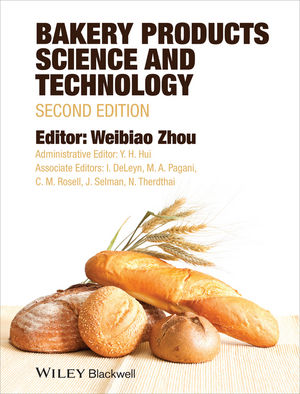Chocolate offers snack and bakery producers innovation opportunities
Consumers seek out the ingredient in delicious, better-for-you products.

Courtesy of Luker
Almost everyone loves chocolate. In fact, according to Statista data, U.S consumers eat about 3 billion kg of chocolate confectionary annually. The variety and types of chocolate being consumed has grown over the past several years, and while indulgence will always be a mainstay for the chocolate category, chocolate has expanded beyond the traditional dark, milk, and white chocolate varieties.
Consumers’ increasing interest in health and well-being has helped diversify the chocolate offerings, especially when it comes to better-for-you options. For example, there are organic varieties, plant-based, and dairy-free, to name a few; according to Mintel data shared by Flavorchem, 13% of recent North American chocolate launches are touted as vegan, and 5% are plant-based.
New products
Luker Chocolate is a B-Corp that prides itself for crafting at origin (the chocolates are crafted at the manufacturing plant located in Colombia) and utilizing Fino de Aroma cocoa in its products. According to Marcela Jaramillo, vice president marketing, Luker Chocolate, Fino de Aroma cocoa (fine flavor cacao) is a special type of cocoa classified by the International Cocoa Organization for its fruity, flowery, and nutty malt notes. Only about 8% of the world’s cocoa is Fino de Aroma and 76% of Fino de Aroma cocoa is produced in Colombia, Ecuador, Peru, and Venezuela.


Courtesy of Luker
According to Innova 2024, 42% of global consumers identify protein as the most important ingredient. To address this trend, Luker Chocolate now offers its 44% Dark Chocolate with Pea Protein. “This product meticulously crafted at its origin, blends rich taste with high nutritional value. With 5 grams of protein per 25-g serving, it’s an excellent option for those seeking a plant-based, gluten-fee, and non-GMO ingredient,” explains Jaramillo. This product reportedly is suited for enrobing nuts, almonds, fruits, and granola bars and can also be incorporated into chips to enhance trail mixes and other bakery recipes.
Another new Luker product is its 70% Dark Chocolate which is sweetened with coconut sugar. “Coconut sugar, known for its lower glycemic index, imparts a unique toffee-like flavor, making it an excellent choice for health-conscious consumers looking for a sweet treat without the typical sugar spikes,” shares Jaramillo.
In data shared by Jaramillo, she noted the organic chocolate market has been experiencing robust growth, driven by rising consumer awareness about health and sustainability. The global market is projected to expand significantly, with an expected CAGR of 8.6% from 2024 to 2032. In response to the growing trend, Luker Chocolate has developed a range of organic chocolate couvertures made from 100% Colombian organic cocoa beans. These organic offerings are also available in cocoa powder and chips.
Voyage Foods is a relatively new company that was founded with a mission to create delicious, sustainable, and accessible foods of the future. Cocoa-free chocolates is one of its new products. These products are designed to be free from any of the top nine allergens, dairy-free, non-GMO Project Verified, upcycled, and vegan. The products are available in chips and EZ melt wafer formats; and come in two flavor profiles, semi-sweet and sweet “milk.” Kelsey Tenney, vice president of R&D and founding team member with Voyage Foods, describes how best to use these new products.


Courtesy of Voyage Foods
“Both formats are highly versatile as cocoa-based chocolate, and are interchangeable with traditional chocolate in recipe development, specifically in enrobing, molding, and bake-stable applications for confectionary, frozen, and bakery. We believe this cocoa-free chocolate particularly shines in applications like chocolate chip cookies and enrobed products,” she relates.
The company also created a cocoa-free and hazelnut-free spread that is reminiscent of Nutella, but is allergy-friendly, dairy-free, and vegan. The product functions as an ingredient in filled pastries and doughnuts and also as a stir-in for cookies and brownies.

Adam Maxwell, CEO and founder, Voyage Foods, relates the company’s recent partnership with Cargill to supply cocoa-free chocolate and nut-free spreads to global food manufacturers in the B2B channel. As part of the agreement, the company will also co-create new offerings including coatings and fillings, ice cream and confectionary.
Flavorchem launched one of its latest flavor collections, Chocolate Remix. The line features chocolate paired with on-trend ingredients to create the following new innovative flavors: Chocolate Peanut Butter Banana, Chocolate Stout, Dark Chocolate Mint, Mezcal Hot Cocoa, White Chocolate Matcha, and White Chocolate Toasted Coconut. All the flavors are Kosher, non-GMO, allergen-free, vegan, Prop 65 free, and can be labeled as “natural” on the ingredient statement.
Claims and certifications
Consumers are interested in the health and wellness not only for themselves but also for the planet. Companies are more aware of the need for products (including chocolate), that are sustainable and clean label. However, as Linnea Halter (marketing coordinator, Global Organics) points out, “In the food and beverage market there has been a lot of confusion due to the numerous claims related to sustainability and natural products. This has led to growing concerns among consumers about greenwashing. To address these concerns, the clean label movement emerged, with consumers demanding products that are free from pesticides, herbicides, and preservatives, and are made with natural and easily understandable ingredients.”
The clean-label movement has now evolved into the “clear label” movement, according to Halter. “The clear label movement goes beyond simplifying ingredients to simplifying the claims made on product labels. Instead of relying on non-regulated terms like sustainability or natural, consumers now seek certifications that can substantiate these claims and are third party verified (i.e. USDA Organic, etc.). They also prefer packaging that provides simplified and transparent information about the product’s sustainability practices.
Price and supply
Cocoa prices have reached historical highs in 2024 due to a global cocoa shortage. The shortage is connected with climate-change-induced droughts that have impacted the crops in West Africa, which contributes approximately 80% of the world’s cocoa supply. Many chocolate companies have noted the high price and volatility in the cocoa market which is causing challenges for the industry due to increased production costs and supply instability.

The market situation on cocoa prices and supply have sparked a heightened interest in compound coatings and inclusions, especially for new product launches states Amanda Beery, product marketing specialist, Cargill. “Chocolate by standard of identity must include cocoa butter. With compound products, we replace the cocoa butter with another vegetable fat such as palm oil. Compound offers a number of benefits as compared to ‘real’ chocolate, including the ability to melt at lower temperatures. Other performance benefits include high heat resistance, improved color and shine, and longer shelf life due to the delayed appearance of fat bloom (fat bloom refers to the whitish dusting or streaking that forms on the surface of chocolate). Additionally, as it’s not constricted by a standard of identity, compounds allow for more innovation around colors and flavors.”
Cargill offers a selection of compound coatings and drops. The product line includes chocolate-flavored compounds ranging from a dark chocolate-flavored coating like Merkens Rainbow Cocoa Dark to a well-rounded milk chocolatey-flavored choice like Ambrosia CF-1046 Landmark. The company also offers white chocolatey- flavored options, including Merkens Rainbow White.
Andrea Lee, junior marketing specialist, Flavorchem, notes, “Cocoa prices have reached record highs, doubling in the futures market since the year’s start due to extreme weather in West Africa, causing supply deficits. Brands may need to raise prices, decrease product sizes, or reduce chocolate content. To help with these issues, Flavorchem offers optimized cocoa replacers, providing an economical, consistent, natural, and non-GMO certified alternative for various applications in liquid and powder forms.”
Flavorchem’s cocoa replacers primarily function as flavor versus functional ingredients. “They are designed to substitute or partially replace real cocoa across various applications, imparting sweet, cocoa, creamy, nutty, and other desired notes based on customer preferences,” shares Lee. These solutions are highly application-specific and can be tailored to meet customer specifications. They are utilized in a wide range of products including biscuits, cookies, cakes, icings, fillings, and confections. The products can be adapted to different types of cocoa and varying usage levels.

Aaron Iverson, national sales manager, U.S., and Canada, Global Organics, notes, “The 2024 cocoa market has been traded at levels more than double the historical highs in cocoa, and the volatility has seen multiple daily trading ranges that are wider than the entire trading range of the cocoa market in Q4 of 2023. The main variable driving the market up is poor production from the primary growing cocoa regions. Decreased supply is stressing the supply chains and pushing prices to historical highs. This creates more volatility, both on short-term and long-term supply. Engaged and collaborative communication is essential to manage the risk and minimize the impact of this market.”
According to experts, the market will continue to experience challenges until the price and supply of cocoa has stabilized. However, consumers are not willing to give up their chocolate fix. Manufacturers will need to provide innovative solutions that address consumers’ needs and are available to tempt their sweet tooth.Looking for a reprint of this article?
From high-res PDFs to custom plaques, order your copy today!









